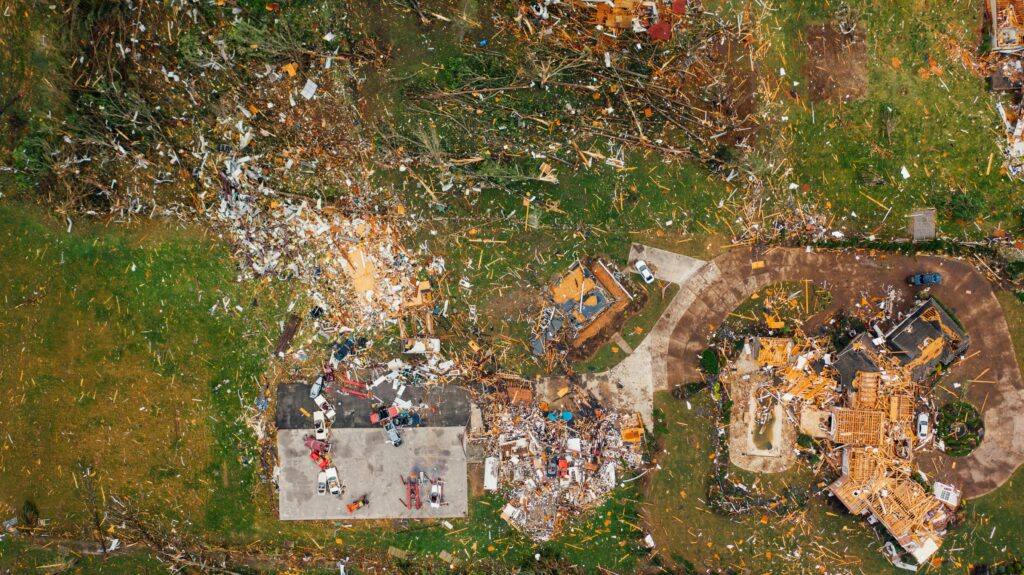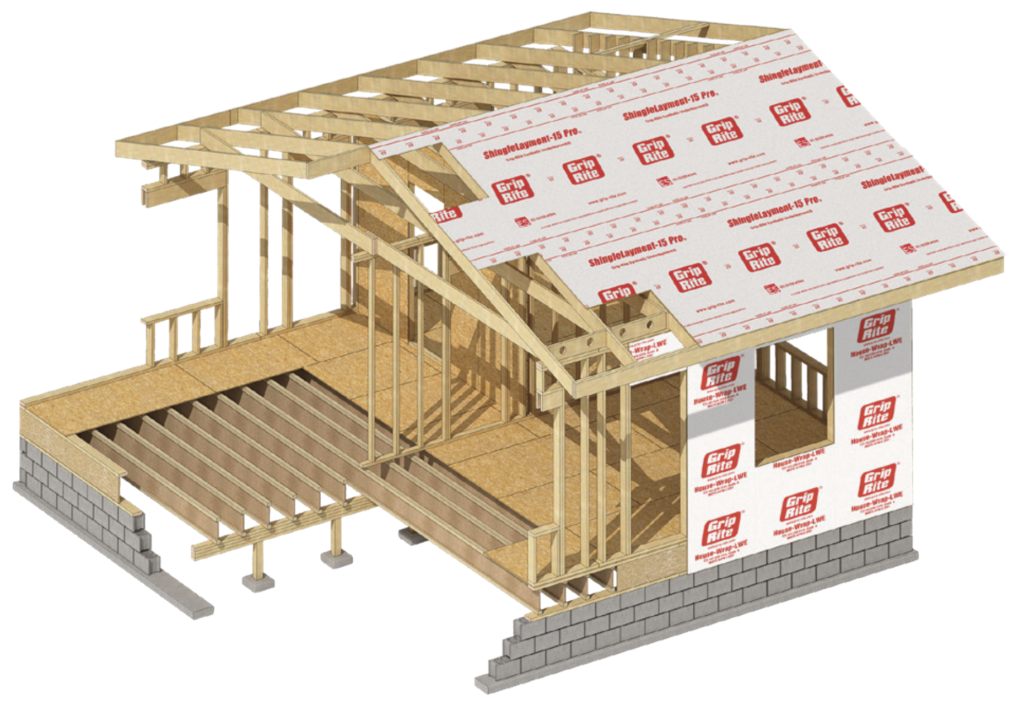
Extreme weather events and climate-related disasters dominate the news cycle with untold billions of dollars in damage. Tens of thousands are displaced from homes suddenly in flood zones or surrounded by wilderness primed to burn. Adopting climate resilient building practices goes a long way towards providing some peace of mind in the face of uncertainty.
Beyond the human and environmental costs of these extreme climate-related events, the cost in materials and man-hours mounts.
Climate resilient building practices allow the implementation of new techniques and materials that stave off the worst. From the ground up, new products make it possible for structures, homes, and families to weather the storms.
As recent disasters on the coasts demonstrate, weather-related events aren’t going anywhere. Powerful wind, rain, and extreme temperatures stress the ability of traditional building methods and materials to keep pace.
Climate extremes affect buildings in several key ways:
While we can’t control the weather, planning for your clients’ challenges increases their peace of mind.
Climate resilience is one way to describe how well structures can withstand unexpected weather events. Preventing catastrophic damage to a home or commercial building isn’t impossible. Implementing the right designs, building techniques, and products allows your clients to better cope with risks associated with changing patterns.
Many of the necessary steps to increase an area’s climate resilience are beyond the scope of the individual builder. Regional infrastructure isn’t something you’ll likely touch, but you can impact it on a micro-level.
Local, state, and federal governments assess a region’s needs and guide the development of building codes. Building product manufacturers also invest time, money, and resources in developing products that increase climate resilience.
Adopting climate-resilient building practices helps protect your building projects and increases their lifespan. This approach to design and construction focuses on developing a strong and efficient structure that can withstand disasters.
Increasing a structure’s energy efficiency helps ensure vital systems aren’t damaged in a flood or long-lasting power outage. After Hurricane Helene passed through the Eastern Seaboard in September 2024, power was out for over two weeks. Even in metropolitan areas like Asheville, residents relied on generators for electricity.
Similarly, major flooding requires home and business owners to remove gypsum drywall and insulation to prevent mold. In areas with widespread storm impact, long-term damage is inevitable.
A few of the most common ways to include climate resilience in your projects are:
Introducing climate-resilient practices won’t eliminate the impact of significant weather events, but they can prevent major damage.
One difficulty with improving the climate resilience of the housing stock is that 80% of homes in the US are 20 years old or older. While climate-proofing older housing stock is more challenging, there are other instances where it makes sense to plan for the worst.
Renovations and new builds allow builders to include these climate-resilient features before disaster strikes. Investing early reduces costs after a catastrophic event.
An effective building envelope goes a long way toward increasing a project’s climate resilience. This barrier comprises all systems that interface between the interior and exterior environments, from below grade to the roof.

From the interior of a wall assembly through to the exterior sheathing, each layer plays a vital role in preventing structural damage from the elements. Innovation in the building products industry allows for a more efficient building envelope than ever before.
Our house wraps are engineered to provide robust protection for your building envelope.

Grip-Rite WeatherResistor-HP is a non-woven house wrap rated for residential and commercial applications. Enhanced water resistance and 98% drainage efficiency combined with high vapor transmission ensure a balanced interior humidity. Code-compliant and mechanically installed, it is UV stable for 180 days and contributes to a better-performing wall system.
House Wrap-LWE is a mechanically installed weather resistive barrier that prevents moisture penetration into the building envelope without compromising vapor permeability. Appropriate for a broad climate range, the transparent fabric makes installation easy and is UV stable for 180 days.
Commercial Grade-D is a heavy-duty mechanically installed weather-resistive barrier (WRB) with a cross-woven polyethylene structure. Intended for severe weather areas, it’s a mechanically installed weather-resistive barrier that is tear-resistant and UV-stable for 180 days.
With more extreme weather events on the horizon, architects, designers, and builders are embracing climate-resilient practices. Preventing catastrophic damage to a home or structure is within the realm of possibilities with the right combination of products and other factors.
Grip-Rite Pro-Wrap™-SA is the newest addition to the house wrap lineup. This award-winning WRB is a self-adhering, spun-bonded polypropylene fabric that functions as a water, air, and vapor barrier. Lightweight and easy to apply, this product has a 90% drainage rating, primer-less installation, and contributes more efficient energy usage.

For the most efficient building envelope, Grip-Rite ProWrap-SA is a clear choice. Increase energy efficiency and promote a healthier indoor environment with this easy-to-apply, future-forward innovation.
Find out Where to Buy near you.